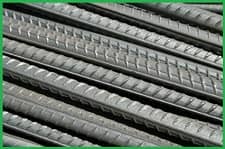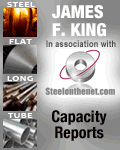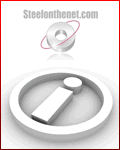Green steel demand assessments.

Green Steel Demand Forecasts.
Volume projections by Country / Region / Product / End-Use.
MCI have prepared assessments of future green steel demand. These are based on annual forecasts for total consumption of all finished steel products by country, product and end use to 2050. For each main finished steel product, estimates have been made of the share of consumption that is likely to be for green steel. For this purpose 'green steel' is defined as
"steel product made by a process with low emissions of carbon dioxide, which the consumer will require in his / her product specifications or for which the consumer is prepared to pay an additional price".

The assessments of the share of consumption have three components, afs follows.
- End-use adoption rate
- Product adoption rate
- Country adoption rate.
End-Use Adoption Rate
Our view is that the technical performance of green steel products is essentially the same as that of conventional steel products. Steel is purchased according to specifications that determine its performance in use. Provided those specifications are met, the user has no technical concern about the process of production. The only advantage of green steel is therefore the potential marketing advantage of the product, the manufacture of which can be claimed to have low emissions of carbon dioxide, i.e. a small carbon footprint.
Because of this we assume that the rate of adoption of green steel will vary between the end-use sectors. Sectors which sell products directly to consumers, such as the automotive and domestic appliance industries, will have a high requirement for green steel for marketing purposes. The public sector in certain countries will also have a high requirement for green steel in its purchases, such as for steel in public buildings. Industrial sectors where the steel product is not visible to the public will have less interest in steel that has a low CO2 footprint. Such examples might include chemicals manufacturing plants or steel piping used for sewage disposal.
Product Adoption Rate
Within each end-use sector consumers will have a stronger incentive to specify some steel products as green steel before others. In the automotive sector, for example, exterior body sheet (cold rolled coil or galvanised coil) is more likely to be specified as requiring low carbon steel before unseen products such as suspension springs or other products that come to the finished vehicle via numerous sub-contractors and where tracking of the origin of steel is more complex. Our estimates thus assume that cold rolled coil will be specified more rapidly than the average, while reinforcing bar will be specified as green steel less rapidly than the average, for sectors where these finished products are used.
Country Adoption Rate
It is further assumed that some countries will demand low carbon steel products earlier than others, with countries where environmental issues are a major public concern requiring green steel products at a higher level than the average, and vice versa.
Results
The potential consumption of green steel is calculated for each product in each application in each country in each year as the total consumption of finished steel x end-use adoption rate x product adoption rate x country adoption rate.
For example: where total consumption of reinforcing bar in the construction sector in the UK in 2035 equals 614 thousand tonnes,
- end-use adoption factor for construction in 2035 = 0.357
- production adoption factor for reinforcing bar in 2035 = 0.754
- country adoption factor for UK in 2035 = 1.2
Thus, green rebar demand in the UK construction sector in that year is determined to be 614 x 0.357 x 0.754 x 1.200 = 198 thousand tonnes or 32.3% of the total consumption of reinforcing bar in construction that year.
Click here to downloaded an example analysis. Such an analysis is available for US $750+VAT per country, and with be supplemented with a summary of assumptions made regarding end-use, product and country adoption rates.
To purchase an updated version of our low carbon steel demand assessment for an given country, please email us at info@steelonthenet.com to advise the country of interest. Payment may be made via the PayPal button below. For multiple countries and / or for a region, please contact us for a price estimate.
Click PayPal button to purchase a single country analysis for $750+VAT. VAT at 20% is chargeable for UK customers, and may apply elsewhere in the EU.
To contact us about our consumption forecasts for low carbon steel please email info@steelonthenet.com.








